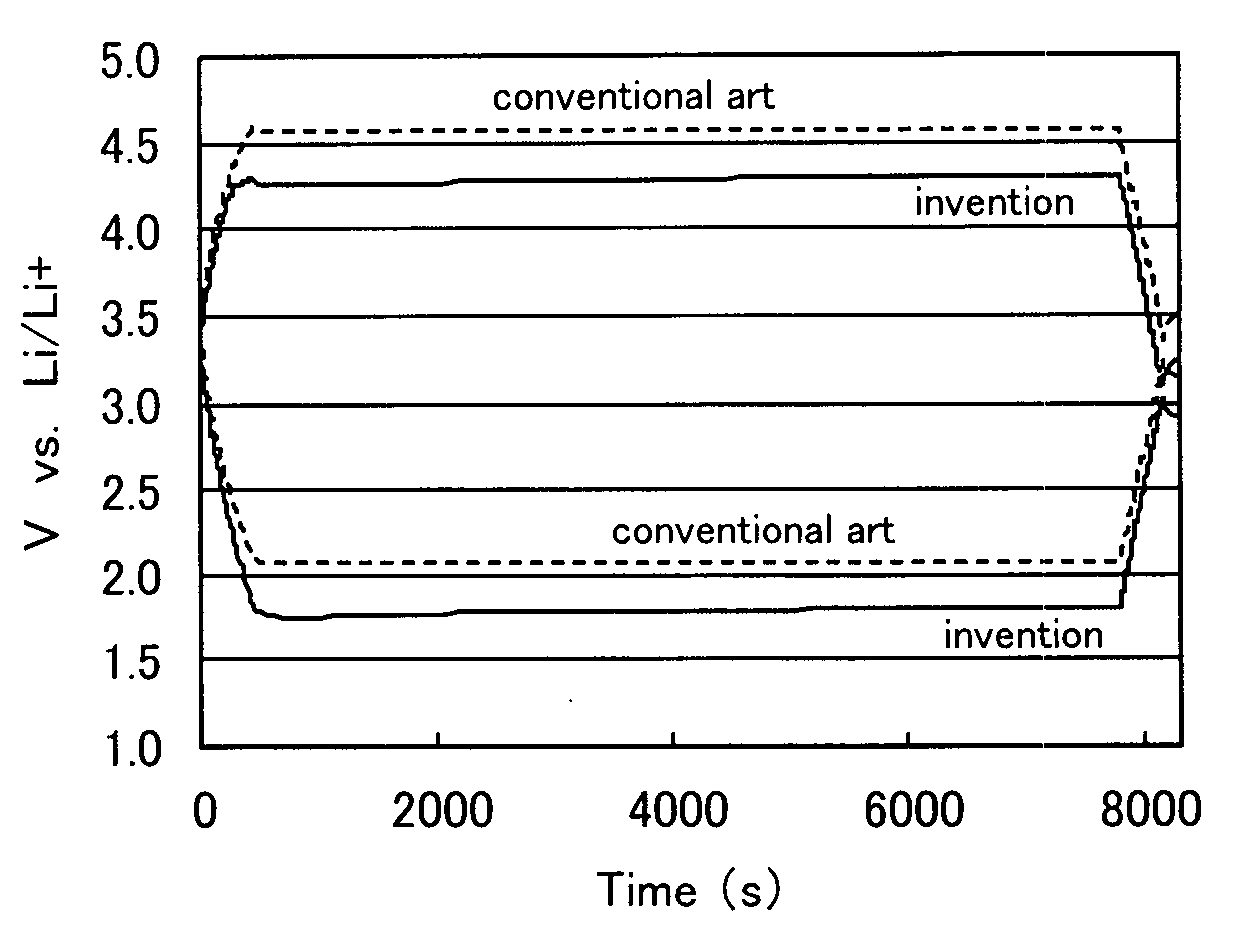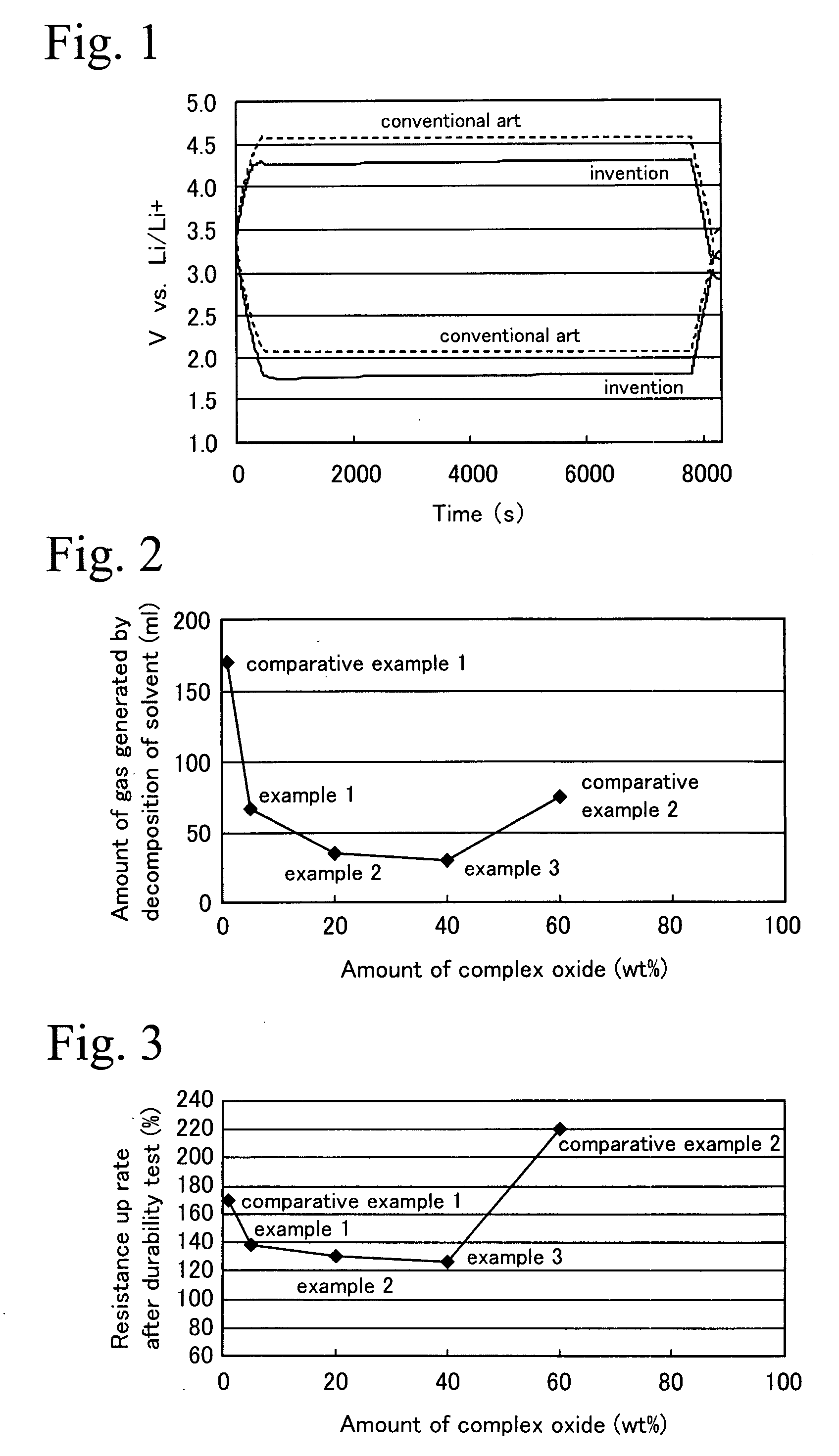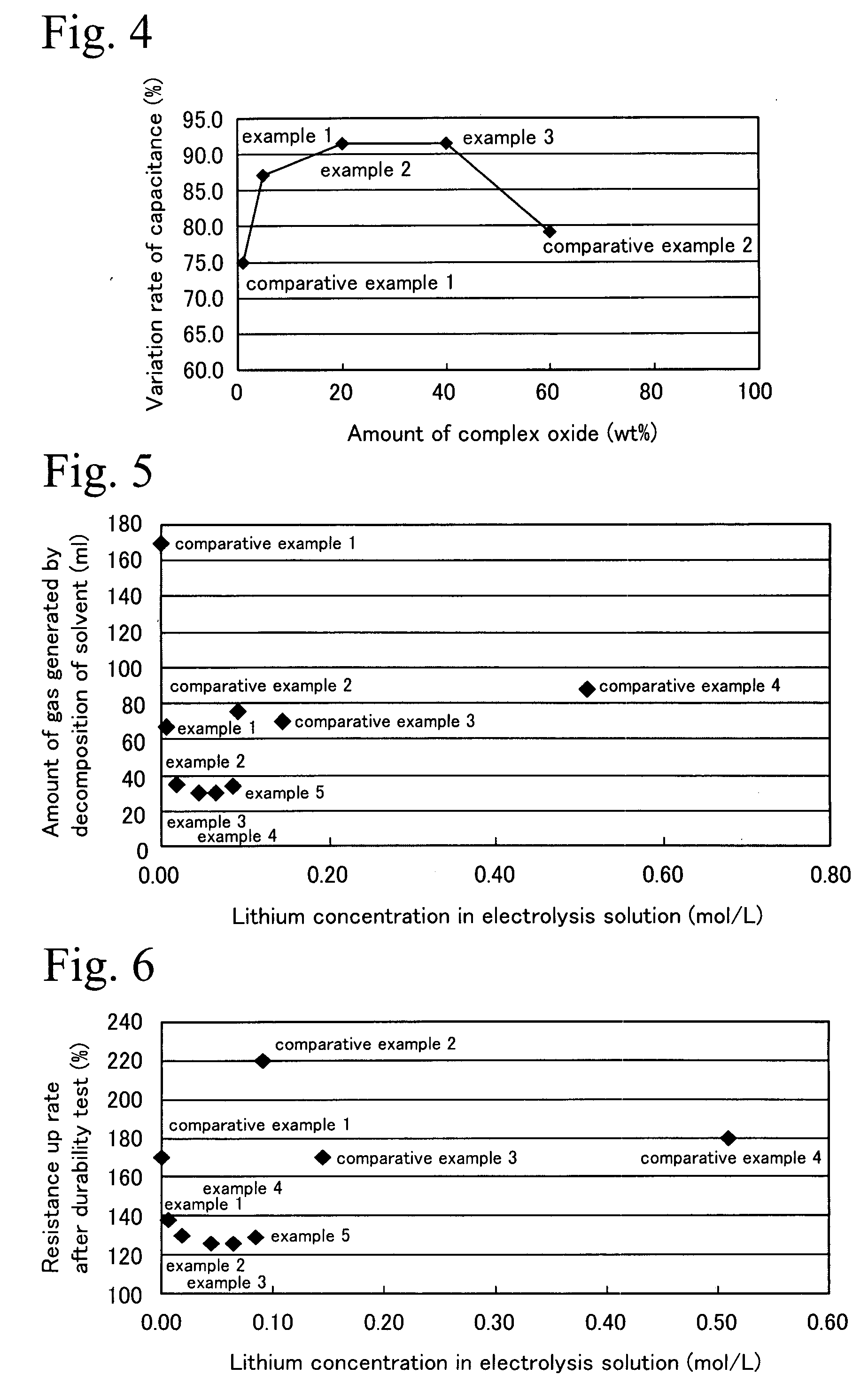Electric double layer capacitor
a double-layer capacitor and capacitor technology, applied in the direction of hybrid capacitor terminals, hybrid capacitor protection/adjusting, electrolytic capacitors, etc., can solve the problems of increasing the internal pressure of the capacitor, affecting the doping effect of the negative electrode activated carbon with lithium, and difficult to use the conventional electric double-layer capacitor at 3.0 volts or more, etc., to achieve improved voltage endurance, improved energy density, and improved durability
- Summary
- Abstract
- Description
- Claims
- Application Information
AI Technical Summary
Benefits of technology
Problems solved by technology
Method used
Image
Examples
examples
[0041]The present invention is further explained by way of Examples.
1. Preparation of Electric Double Layer Capacitors
examples 4 and 5
, and Comparative Examples 3 and 4
[0047]In the processes of the electric double layer capacitor in the above examples 1 to 3 and comparative examples 1 and 2, a propylene carbonate solution (Trade name: KKE-15, produced by Japan Carlit Co.) of (spiro(1,1)-bipyrrolidinium) tetrafluoroborate, a propylene carbonate solution of LiBF4 produced by Mitsubishi Chemical, and a propylene carbonate solution produced by Mitsubishi Chemical were used to produce an electric double layer capacitor in the same way as the above processes except that the electrolysis solution in which the concentration of the lithium ion after the electric double layer capacitor was produced is as shown in Table 1.
example 6
[0048]In the process of the electric double layer capacitor in the above examples 1 to 3 and comparative examples 1 and 2, an electric double layer capacitor was produced in the same way as the above processes, except that the activated carbon was changed to a steam activated carbon (Trade name: Coconut husk activated carbon YP17, produced by Kuraray Chemical).
PUM
 Login to View More
Login to View More Abstract
Description
Claims
Application Information
 Login to View More
Login to View More - R&D
- Intellectual Property
- Life Sciences
- Materials
- Tech Scout
- Unparalleled Data Quality
- Higher Quality Content
- 60% Fewer Hallucinations
Browse by: Latest US Patents, China's latest patents, Technical Efficacy Thesaurus, Application Domain, Technology Topic, Popular Technical Reports.
© 2025 PatSnap. All rights reserved.Legal|Privacy policy|Modern Slavery Act Transparency Statement|Sitemap|About US| Contact US: help@patsnap.com



